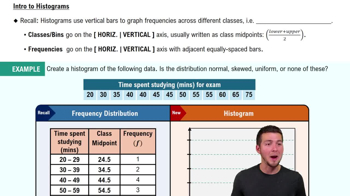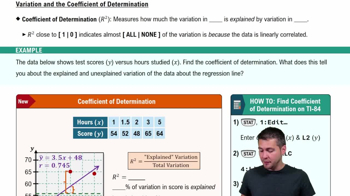Here are the essential concepts you must grasp in order to answer the question correctly.
Frequency Histogram
A frequency histogram is a graphical representation of the distribution of numerical data. It displays the frequency of data points within specified intervals, known as bins or classes. Each bar's height corresponds to the number of observations in that interval, allowing for a visual interpretation of the data's distribution and central tendencies.
Recommended video:
Classes (Bins)
In the context of a histogram, classes (or bins) are the intervals into which the data is divided. The choice of the number of classes can affect the histogram's appearance and the insights drawn from it. A well-chosen number of classes helps to reveal patterns in the data, such as peaks and gaps, while too few or too many can obscure important information.
Recommended video:
Determining the Number of Classes
Determining the number of classes for a histogram is crucial for effective data visualization. Common methods include Sturges' rule, which suggests using the formula k = 1 + 3.322 log(n), where k is the number of classes and n is the number of data points. This approach helps balance detail and clarity, ensuring that the histogram accurately represents the data's distribution.
Recommended video:
Coefficient of Determination






